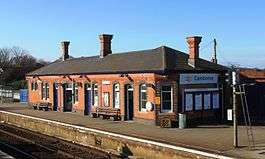Engineering brick

Engineering bricks are a type of brick used where strength, low water porosity or acid (flue gas) resistance are needed. Engineering bricks can be used for damp-proof courses.
Clay engineering bricks are defined in 6.4.51 of British Standard BS ISO 6707-1;2014 (buildings & civil engineering works - vocabulary - general terms) as "fire-clay brick that has a dense and strong semi-vitreous body and which conforms to defined limits for water absorption and compressive strength"[1]
Stronger and less porous engineering bricks (UK Class A) are usually blue due to the higher firing temperature[2] whilst class B bricks are usually red. Class A bricks have a strength of 125 N/mm² and water absorption of less than 4.5%; Class B bricks have a strength greater than 75 N/mm² and water absorption of less than 7%.
Accrington brick is one type of engineering brick, which was used in the construction of the foundations in the Empire State Building.